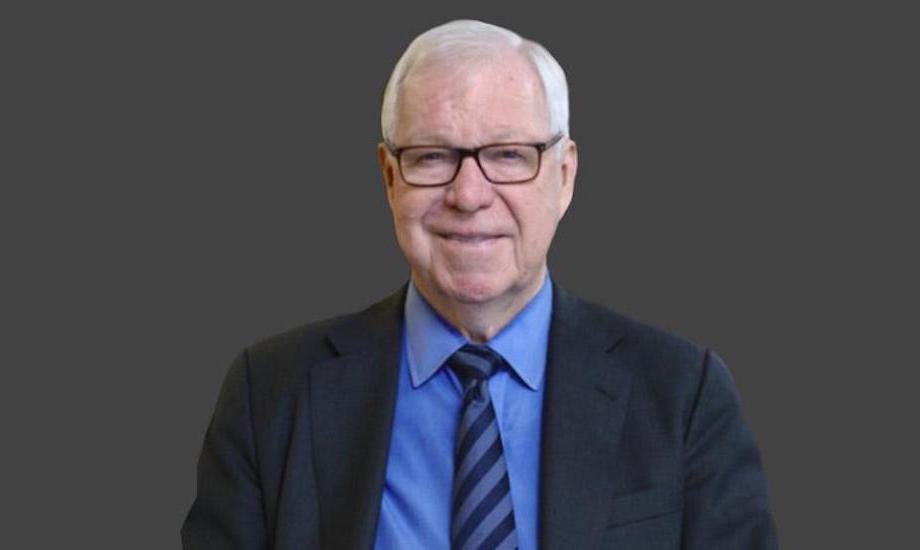Fletcher H. “Bud” Griffis, a U.S. Army Corps of Engineers global builder, early proponent of BIM technology and veteran engineering and construction academic and activist, died March 20 in New York City, said New York University, his latest employer.
The cause of death was complications of COVID-19, according to Columbia University, where he had also taught. Griffis was 82.
Until retirement in December, Griffis was construction professor emeritus at NYU Tandon School of Engineering, joining its Brooklyn, N.Y.-based Polytechnic University unit in 2000 and also serving as director of its Center for Construction Management Innovation.
He also had previously been provost, engineering dean and vice president for academic affairs, and managed, for a time, all capital construction for Polytechnic, which merged into Manhattan-based NYU in 2014. "Under his leadership, the [400-unit] Othmer Residence Hall was finished on time and under budget, a rarity in NYC construction," says NYU.
The university adds that "he helped make NYU a hub of research on emergency preparedness as director of the New York State Resilience Institute for Storms & Emergencies."
Griffis also specialized in application of operation research and systems analysis principles to construction planning, operations and management, and in applying 3D computer models to CM. He was an authority on concepts of construction partnering, dispute resolution, safety and leadership, says NYU, as well as an early proponent of Building Information Models. In the last decade, Griffis was involved in research into second generation magnetic levitation vehicle infrastructure.
Griffis also was professor emeritus in Columbia's civil engineering and engineering mechanics department.from1984 to 1999. He led its construction engineering program and directed its Center for Infrastructure Studies. Rene Testa, a former faculty colleague, said in a university announcement that Griffis "transformed a nascent construction engineering option into a most vibrant and popular concentration.”
Griffis received his engineering BS from the U.S. Military Academy at West Point, and MS degrees in construction engineering and in operations research, and a PhD in civil engineering construction from Oklahoma State University. He was also a graduate of the U.S. Army War College.
According to NYU, Griffis "never considered a military career until being offered a spot at West Point, but once assigned to the 82d Airborne Division at Fort Bragg after graduation, he realized that he had found something of a calling."
The school obituary says his career in the US Army Corps of Engineers included supervising, in 1969, construction of a 27-mile highway used as a supply route from the southern Mekong Delta to Saigon in Vietnam, earning a Legion of Merit, among other military career commendations.
Griffis also helped lead a fast-track project to build air bases in Israel's Negev Desert, required under the Camp David Peace Accords to meet the schedule negotiated by President Jimmy Carter between Egypt and Israel. NYU says that "although some insiders had predicted that the work could take a decade, Griffis needed less than a third of that."
For 20 years preceding his Israeli assignment, Griffis commanded Corps construction and combat units in Korea, Germany and the U.S.
As New York district engineer, he managed major military projects from southern New Jersey to Maine, Greenland and Labrador, including the $1.25-billion expansion of the Fort Drum military base in upstate New York in the late 1980s, with what one Corps official noted as an "unmercifully compressed" schedule. When completed in 1991, it was the 10th largest U.S. military installation.
Speaking Out
An early observer of climate change risks, Griffis noted in a 2008 ENR opinion, that "the largest danger to this country’s economy and quality of life is our addiction to petroleum. That has to be severely reduced." He added, "The answer to the U.S. economy, U.S. prestige, and U.S. world leadership lies in making oil obsolete for all but special applications."
Griffis said the solution required "a public–private bailout. Not the kind where one puts dollars down a black hole ... the kind that develops new U.S. industries, new U.S. infrastructure, and a new U.S. transportation system."
In response to a 2013 New York City resilience plan, he said "some [of the recommendations] make sense and some don't. But overall, I like the idea of flood-proofing over building a great big structure in the harbor, an idea that was previously suggested for flood protection."
Griffis was a Fellow and national director of the American Society of Civil Engineers and past president and a director of the Society of American Military Engineers.
He also served as president of NYC Post SAME Scholarship Fund Inc., which has provided millions of dollars in scholarships to thousands of U.S. engineering and architecture students at colleges, universities and service academies. "Our scholarships don’t go in the financial aid package," said Griffis. "The check goes to the student."
He is the author of two textbooks: New York City Infrastructure: A Policymakers’ Guide, 1996 and Construction Planning For Engineers, McGraw-Hill, 2000 and numerous technical papers and reports. A textbook called Leadership, Ethics and Project Execution had been in process.
"His contributions will endure through the careers of his many students and those of us who had the privilege of knowing and learning from him," said .J. Richard Capka, a retired US Army brigadier general, former Corps division commander and US Federal Highway Administration head.
"it was by reputation and the huge 'Camp Drum” to 'Fort Drum' expansion program ... that captured my attention. His name was mentioned in admiration by many very senior Corps officers. That was an attention grabber for me," says Capka. "After he retired his name arose again ... but this time for his work in academia and by observations of others who had no Corps background. It seemed like everything he did conveyed the definition of 'excellence.' His expertise and advice were sought by many in New York. More importantly, I understood how important his personality and manner of interacting with others were to his many successes."






Post a comment to this article
Report Abusive Comment